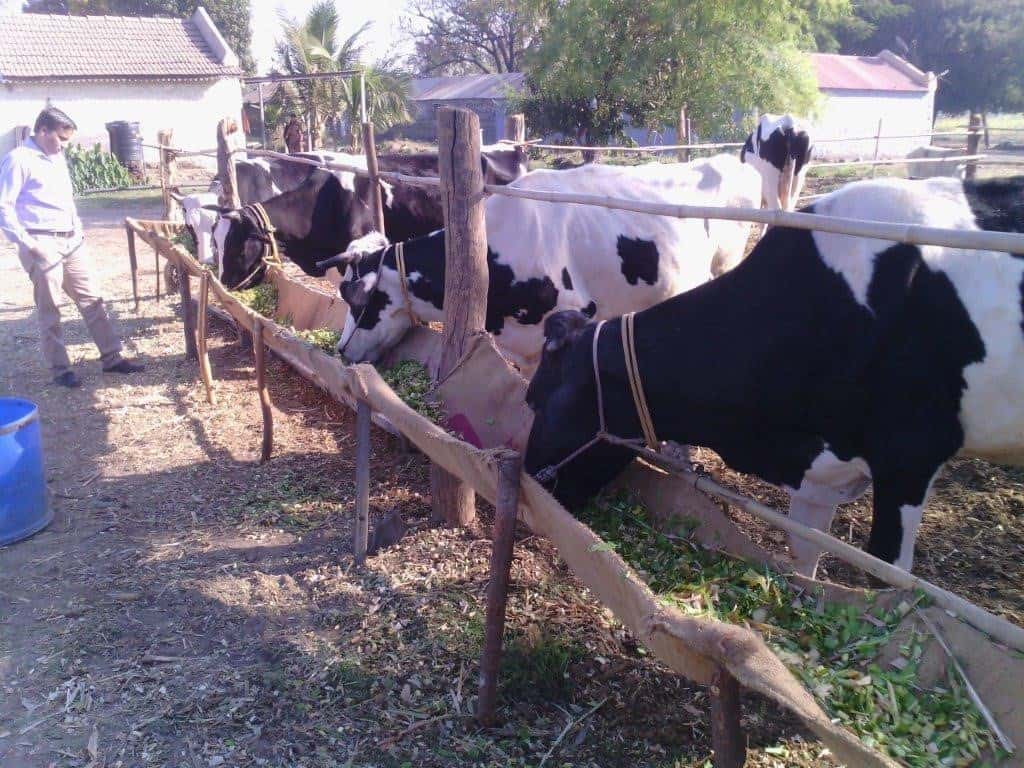
Evolution of Loose Housing System for Cows and Buffaloes in Maharashtra: I-How it started
Indiancattle.com recently organized a competition to select few models of low-cost loose cow housing systems, restricted to the Maharashtra State, but intend to take this initiative even to other states. I had an opportunity to be on the Judging Committee. The competition received around 200 entries, which is quite low compared to the number of such houses constructed in the last 15 years of our first such attempt in the Govind Dairy, thanks to the sincere efforts of Dr. S. Gaikwad. In fact, Loose housing is not a new concept, traditionally our animals were loose, taken out to grazing for the whole day, and then tied during the night. In the 1970s, when HF and Jersey came to India, the barn model of housing also came along. Traditionally, however, the farmers tied the animal either in the day or in the night, which proved to be a basic problem leading to lots of management and health hazards. When I had an opportunity to visit Brazil, along with a team, I found out that the farmers were following a system while rearing Gir, Kankerej, or even HF and Jersey.
The cowhouses were not covered with brick walls, and on inquiry they said that these increase the cost, the walls impede the flow of air and hence the barn remains wet and humid, leading to respiratory disease, mastitis, and several other illnesses. The cows were left loose all the time except, at the time of milking, and the paddocks open to the sun with an earth floor. I was greatly inspired by this new system since it meant very low investment in the barn and several advantages.

The first thing I did after returning from Brazil, was to convert the College barn into loose housing. As usual, I faced resistance from the farm and the department staff, and they all felt that, if not tied, the animals will fight and there will be injuries. Few suggested that we should be modernized with mechanization rather than turning back to the old methods. I could, however, convince the farm laborers giving them allurement that with the new system their work will reduce by half, that they will not be required to wash the floor and the animals. This trick played with them and not only they agreed but also volunteered to construct the loose housing themselves. They collected bamboo available on the farm and made a loose house for 20 cows, with a thatched roof and a green net attractive umbrella. The staff and the students also participated in this effort.
The biggest task was to prepare the earth floor, as everyone rightly thought that Mumbai being a high rainfall area, there will be lots of wet mud disturbing the free movement of the animals. To my luck, a team from Agricultural University, Uppsala came visiting and them I could gather lots of information on ‘cow behavior’, a subject not taught in our colleges. I could understand that cows are social animals and love to be in groups, they have their own language to communicate, they have a social order which is followed strictly. If they fight, although rarely, it is to establish superiority in the social order, the groups adjust among themselves, by accepting or rejecting the superiority of few animals.
When I let the cows loose, on the first day, I found the cows very active running around on the premises, tackling each other (which I thought they were fighting but proved to be wrong). Few bamboo barricades broke and everyone thought that this system would not work. But I was sure since in Brazil the farmers told me that they take around a week to settle down. When I discussed this behavior with the Swedish team, they told me that this was normal. Cows prepare a ‘memory map’ in their brain by touching the obstacles and premise ends. By touching the compound or fence, as well as by seeing, the restricted area map is created and saved. That is the reason after some time, they know where certain amenities and obstacles are kept on the farm. They know where to go for water, for feed as well as for getting milked. Sometimes, while touching the compound it might break if it is not strong enough. For the well-drained earth floor, I discussed with our College Engineers and they suggested that we could increase the soil’s water draining capacity by laying perforated pipes (available in the market), wrapped in jute sheets on which a layer of mud, murum, could be laid. From the Sports section, we borrowed the ground roller, and the first- and second-year students gave helping hands in compacting the floor. We could build this barn by spending just around Rs. 5000, which also included complimentary snacks to the labor and students.
(To be continued Part II – Standard Parameters)
Former Dean and Director of Instructions, MAFSU, Nagpur and
Ex-Associate Dean, Bombay Veterinary College
